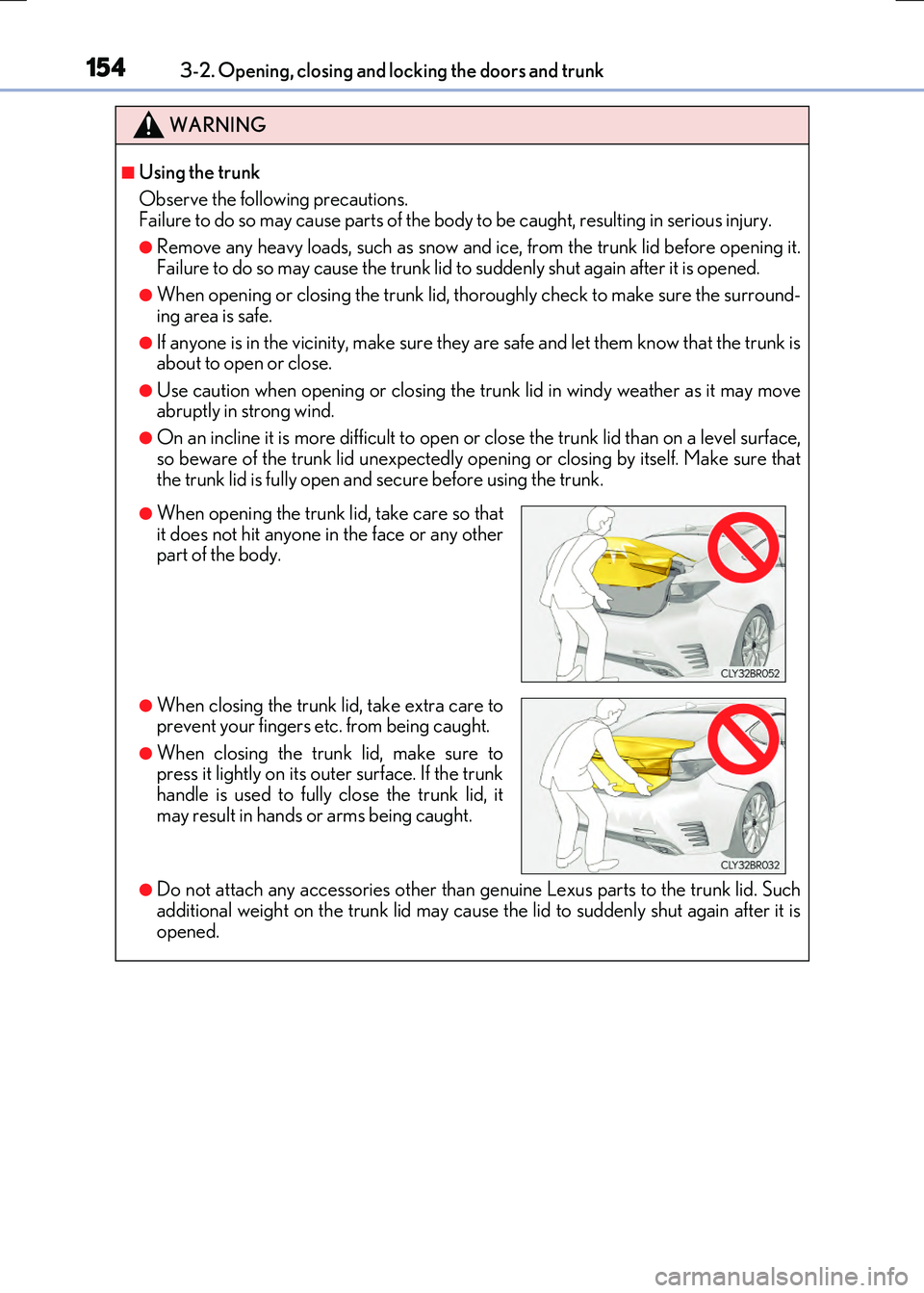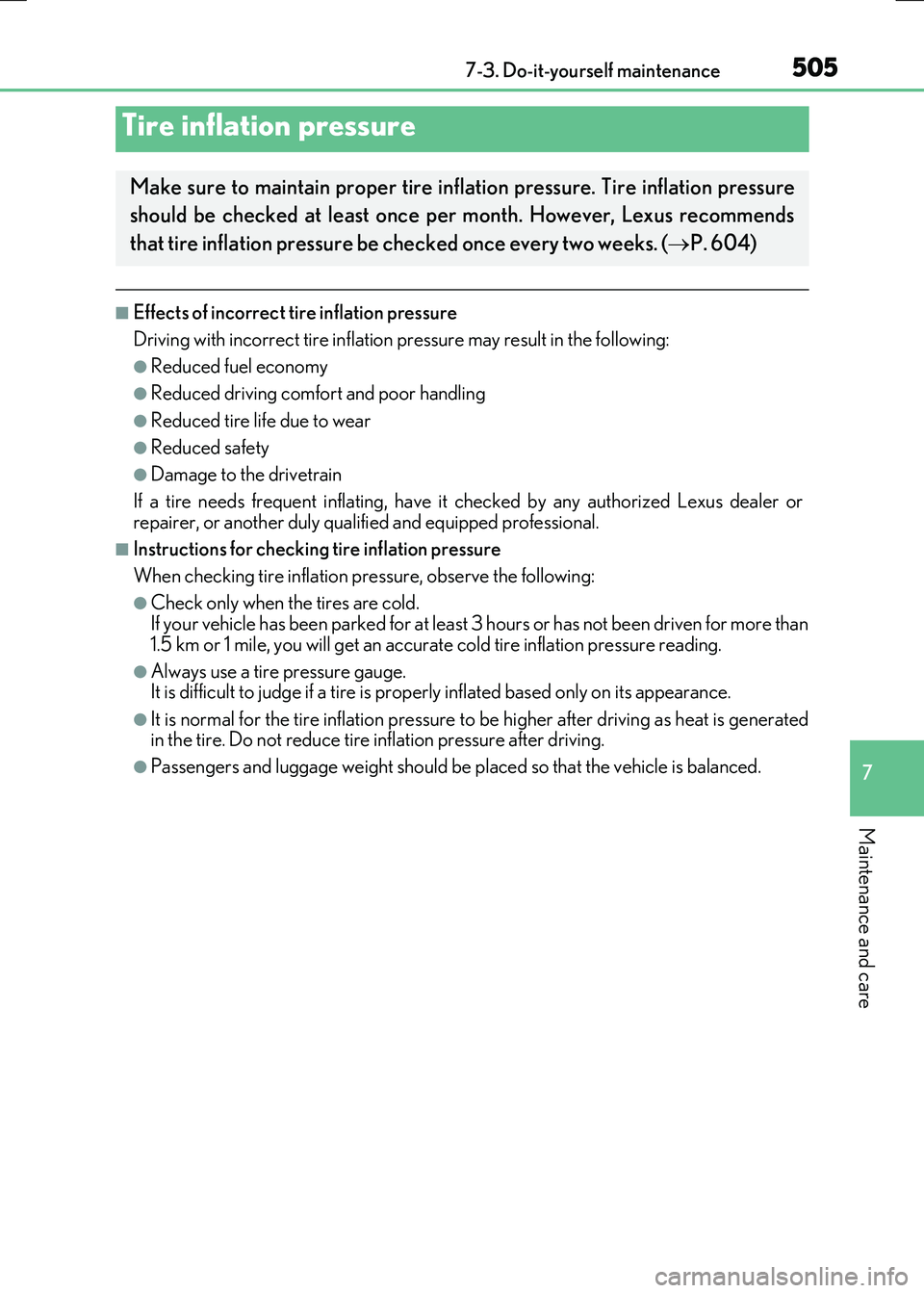Page 62 of 640
621-1. For safe use
RC300h_EE(OM24740E)
Install the available child restraint system in vehicle upon confirming the following
items.
■Standards for child restraint systems
Use a child restraint system that conforms to ECE R44*1.
The following approval mark is displaye d on child restraint systems which are
conformed.
Check for an approval mark attached to the child restraint system.
Example of the displayed regulation
number
ECE R44 approval mark*2
The weight range of the child who is
applicable for an ECE R44 approval
mark is indicated.
*1: ECE R44 is a U.N. regulation for child restraint systems.
*2: The displayed mark may differ depending on the product.
Child restraint system
Page 63 of 640
631-1. For safe use
1
For safety and security
RC300h_EE(OM24740E)
■Mass group
This Mass group table is required when confirming the [Child restraint system
suitability table]. Confirm in accordance with the [Child restraint system suit-
ability table] ( P. 69, 78)
The child restraint system which confor ms to the standard of ECE R44 is cat-
egorized into 5 groups according to the weight of the child.
*: The age range is a standard approximation. Choose according to the weight of the
child.
Mass groupChild weightReference age*
Group 0until 10 kg (22 lb.)about 9 months
Group 0+until 13 kg (28 lb.)about 1.5 years
Group I9 - 18 kg (20 - 39 lb.)from 9 months - about 4 years
Group II15 - 25 kg
(34 - 55 lb.)from 3 years - about 7 years
Group III22 - 36 kg (49 - 79 lb.)from 6 years - about 12 years
Page 68 of 640

681-1. For safe use
RC300h_EE(OM24740E)
■Child restraint system suitability table
The child restraint system suitability table ( P. 69), with symbols, displays the
types of usable child restraint systems and possible seating position installa-
tion for the child restraint system ow ned by the customer. Also, recommended
child restraint systems suited for infants can also be selected. Confirm also in
accordance with [Confirming the possible installation seating positions and
the Mass Group for the seat belt instal lation type child restraint systems].
◆Confirming the possible installation seating positions and the Mass Group
for the seat belt installation type child restraint systems
Confirm the corresponding [Mass group] from the weight of the child
( P. 63)
(Ex. 1) When the weight is 12 kg (27 lb.), [Mass group 0+]
(Ex. 2) When the weight is 15 kg (34 lb.), [Mass group I]
Confirm and select the appropriate possible seating position for the child
restraint system and the corresponding type of system from the [Child
restraint system suitability table]. ( P. 69)
Child restraint system fixed with a seat belt
1
2
Page 77 of 640
771-1. For safe use
1
For safety and security
RC300h_EE(OM24740E)
■Confirming the Mass group and Size class for ECE R44 ISOFIX corre-
sponding child restraint systems
Confirm the corresponding [Mass group] from the weight of the child
( P. 63)
(Ex. 1) When the weight is 12 kg (27 lb.), [Mass group 0+]
(Ex. 2) When the weight is 15 kg (34 lb.), [Mass group I]
Confirming Size class
Select the Size class corresponding to [Mass group] confirmed in step
from the [Child restraint system suitability table] ( P. 78)*.
(Ex. 1) When [Mass group 0+], the corresponding size class is [C], [D], [E].
(Ex. 2) When [Mass group I], the corresponding size class is [A], [B], [B1],
[C], [D].
*: However, listings that are marked with [X] cannot be selected, despite having the
corresponding size class in the suitabilit y table of the [Vehicle ISOFIX position].
Also, select the product designated by [Recommended Child Restraint Systems]
( P. 78), if the listing is marked with [IL].
1
2
1
Page 154 of 640

1543-2. Opening, closing and locking the doors and trunk
RC300h_EE(OM24740E)
WARNING
■Using the trunk
Observe the following precautions. Failure to do so may cause parts of the body to be caught, resulting in serious injury.
●Remove any heavy loads, such as snow and ice, from the trunk lid before opening it. Failure to do so may cause the trunk lid to suddenly shut again after it is opened.
●When opening or closing the trunk lid, thoroughly check to make sure the surround-
ing area is safe.
●If anyone is in the vicinity, make sure they are safe and let them know that the trunk is about to open or close.
●Use caution when opening or closing the tr unk lid in windy weather as it may move abruptly in strong wind.
●On an incline it is more difficult to open or close the trunk lid than on a level surface,
so beware of the trunk lid unexpectedly op ening or closing by itself. Make sure that the trunk lid is fully open and secure before using the trunk.
●Do not attach any accessories other than genuine Lexus parts to the trunk lid. Suchadditional weight on the trunk lid may cause the lid to suddenly shut again after it is
opened.
●When opening the trunk lid, take care so that it does not hit anyone in the face or any otherpart of the body.
●When closing the trunk lid, take extra care toprevent your fingers etc. from being caught.
●When closing the trunk lid, make sure topress it lightly on its outer surface. If the trunkhandle is used to fully close the trunk lid, it
may result in hands or arms being caught.
Page 505 of 640

5057-3. Do-it-yourself maintenance
7
Maintenance and care
RC300h_EE(OM24740E)
■Effects of incorrect tire inflation pressure
Driving with incorrect tire inflation pressure may result in the following:
●Reduced fuel economy
●Reduced driving comfort and poor handling
●Reduced tire life due to wear
●Reduced safety
●Damage to the drivetrain
If a tire needs frequent inflating, have it checked by any authorized Lexus dealer or repairer, or another duly qua lified and equipped professional.
■Instructions for checking tire inflation pressure
When checking tire inflation pressure, observe the following:
●Check only when the tires are cold. If your vehicle has been parked for at least 3 hours or has not been driven for more than
1.5 km or 1 mile, you will get an accurate cold tire inflation pressure reading.
●Always use a tire pressure gauge. It is difficult to judge if a tire is prop erly inflated based only on its appearance.
●It is normal for the tire inflation pressure to be higher after driving as heat is generated in the tire. Do not reduce tire inflation pressure after driving.
●Passengers and luggage weight should be placed so that the vehicle is balanced.
Tire inflation pressure
Make sure to maintain proper tire infl ation pressure. Tire inflation pressure
should be checked at least once per month. However, Lexus recommends
that tire inflation pressure be checked once every two weeks. ( P. 604)
Page 507 of 640

5077-3. Do-it-yourself maintenance
7
Maintenance and care
RC300h_EE(OM24740E)
When replacing wheels, care should be taken to ensure that they are equivalent
to those removed in load capacity, diameter, rim width and inset*.
Replacement wheels are available at any authorized Lexus dealer or repairer, or
another duly qualified and equipped professional.
*: Conventionally referred to as “offset”.
Lexus does not recommend using the following:
●Wheels of different sizes or types
●Used wheels
●Bent wheels that have been straightened
●Use only Lexus wheel nuts and wrenches designed for use with your alumi-
num wheels.
●When rotating, repairing or changing your tires, check that the wheel nuts are
still tight after driving 1600 km (1000 miles).
●Be careful not to damage the aluminum wheels when using tire chains.
●Use only Lexus genuine balance weights or equivalent and a plastic or rubber
hammer when balancing your wheels.
■When replacing wheels
The wheels of your vehicle are equipped with tire pressure warning valves and transmit- ters that allow the tire pressure warning sy stem to provide advance warning in the event
of a loss in tire inflation pressure. Whenever wheels are replaced, tire pressure warning valves and transmitters must be installed. (P. 486)
Wheels
If a wheel is bent, cracked or heavily corroded, it should be replaced. Other-
wise, the tire may separate from the wheel or cause a loss of handling control.
Wheel selection
Aluminum wheel precautions
Page 596 of 640
596
RC300h_EE(OM24740E)
9-1. Specifications
*1: Unladen vehicle
*2: Vehicles with 265/35R19 tires
Maintenance data (fuel, oil level, etc.)
Dimensions and weights
Overall length 4695 mm (184.8 in.)
Overall width 1840 mm (72.4 in.)
Overall height*11395 mm (54.9 in.)
Wheelbase 2730 mm (107.5 in.)
Tread*1Front 1580 mm (62.2 in.)
Rear 1600 mm (63.0 in.) 1570 mm (61.8 in.)*2
Gross vehicle mass 2170 kg (4784 lb.)
Maximum permissi-
ble axle capacity
Front 1120 kg (2469 lb.)
Rear 1205 kg (2657 lb.)